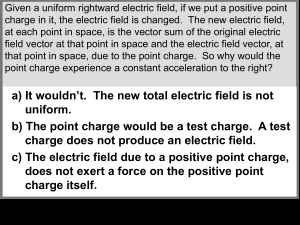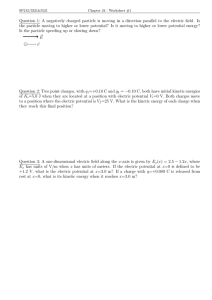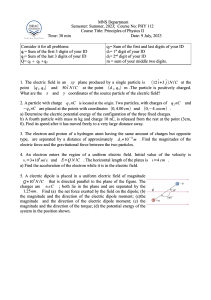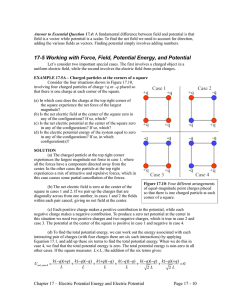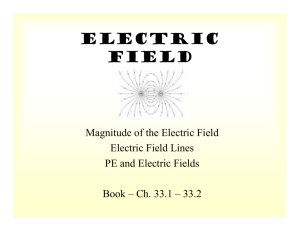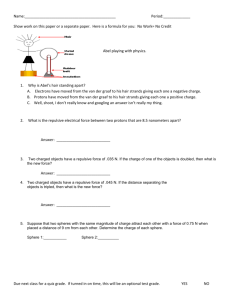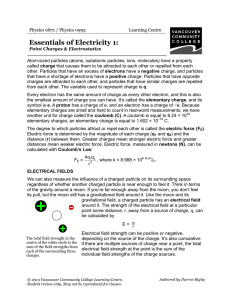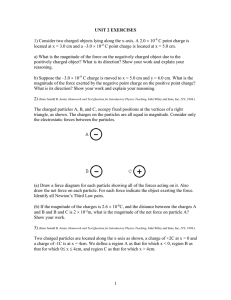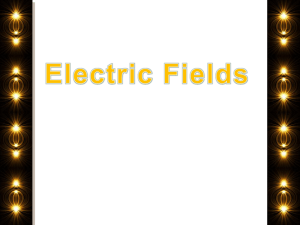Chap 22.1
advertisement
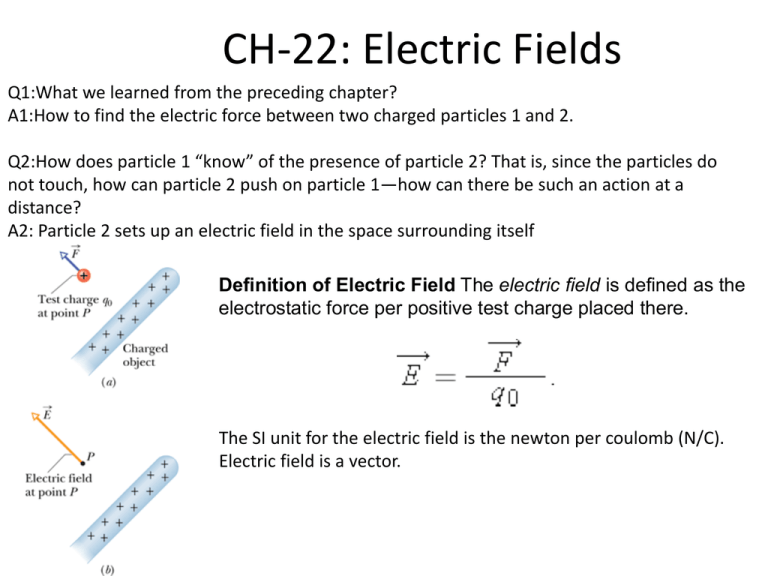
CH-22: Electric Fields Q1:What we learned from the preceding chapter? A1:How to find the electric force between two charged particles 1 and 2. Q2:How does particle 1 “know” of the presence of particle 2? That is, since the particles do not touch, how can particle 2 push on particle 1—how can there be such an action at a distance? A2: Particle 2 sets up an electric field in the space surrounding itself Definition of Electric Field The electric field is defined as the electrostatic force per positive test charge placed there. The SI unit for the electric field is the newton per coulomb (N/C). Electric field is a vector. Electric Field Lines: Isolated single charges The field lines extend toward the negatively charged sphere. (They originate on distant positive charges.) Electric field lines extend away from positive charge (where they originate) and toward negative charge (where they terminate). Q: In the Figure the electric field lines on the left have twice the separation of those on the right. If the magnitude of the field at A is 40 N/C, what is the magnitude of the field at B? Electric Field Lines Infinitely large non-conducting sheet with a uniform distribution of positive charges Electric Field Lines for two positive charges Electric field lines extend away from positive charges (where they originate). Two charges that are equal in magnitude but of opposite sign, an electric dipole. http://www.youtube.com/watch?v=bG9 XSY8i_q8&feature=related http://media.pearsoncmg.com/bc/aw _young_physics_11/pt2a/Media/Electr icity/1106ElecFld/Main.html The Electric Field Due to a Point Charge Ek q r 2 . P9: The figure shows two charged particles on an x axis: -q = -3.20 × 10-19 C at x = -3.00 m and q = 3.20 × 10-19 C at x = +3.00 m. What are the (a) magnitude and (b) direction of the net electric field produced at point P at y = 4.00 m?

